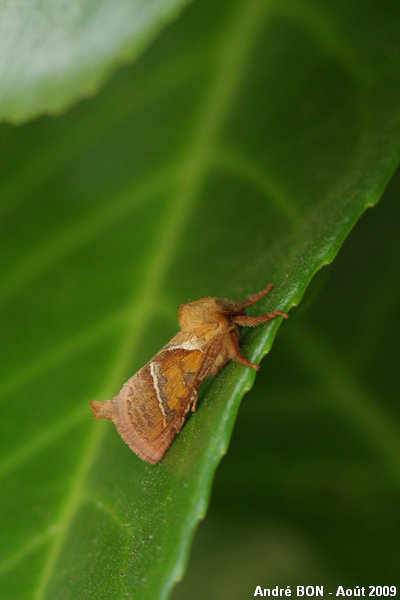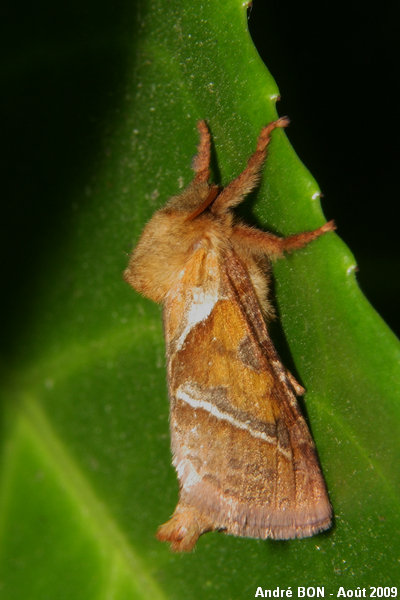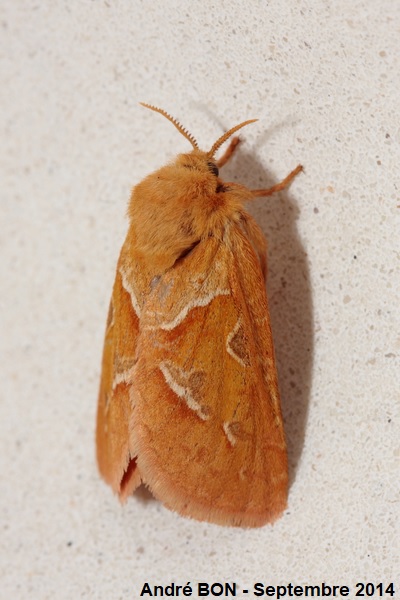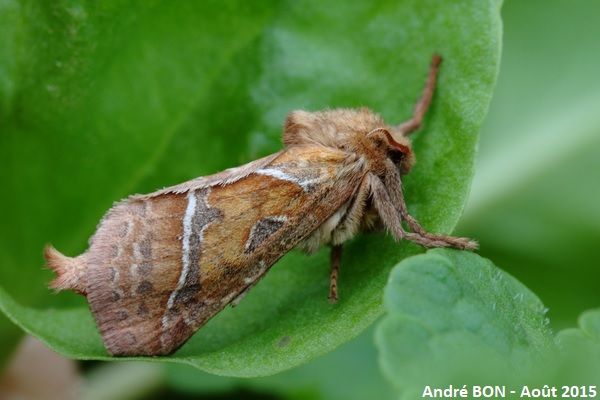



| Orange Swift (Triodia sylvina (Linnaeus, 1761)) |




|
|
Scientific name: Triodia sylvina (Linnaeus, 1761) Common name: Orange Swift Other names: Other scientific names: Phalaena sylvina, Alphus sylvinus, Hepialus sylvina, Hepialus sylvinus. French name: Sylvine Order: Lepidoptera Suborder: Heterocera Family: Hepialidae Subfamily: Hepialinae Wingspan: 25-48 mm. Females are clearly much larger than males. Biotope: Meadows, cultivated areas, gardens. Geographic area: Europe, missing in Corsica, Ireland, Portugal and extreme northern regions, east to central Asia. Flight time: August to September. Number of generations : 1 Caterpillar: Caterpillars grow during two years feeding on the roots of the host plants. They are white with a yellowish or brown head. Host plant: Roots of many herbaceous plants including those of the following genus: Althaea, Verbascum, Taraxacum, Rumex, Daucus, etc.. |
Male Orange Swifts have bright orange coloured fore wings. They show two white stripes forming a V-shape and some brown marks. The hind wings are dark brown. Females show similar patterns but they are a more brownish dull colour. Orange Swifts are active during the night and they are attracted to light. |
| [To know more about the Orange Swift] [Next picture] [Top] |

|
All the moths of the Hepialidae that I have observed have stayed totally immobile when I have approached. So I haven't got any problem to shoot pictures of this Orange swift. |
| [To know more about the Orange Swift] [Next picture] [Previous picture] [Top] |

|
The bright orange colour indicates a male. |
| [To know more about the Orange Swift] [Next picture] [Previous picture] [Top] |

|
New observation of the Orange Swift in my garden. This one is also a male. |
| [To know more about the Orange Swift] [Previous picture] [Top] |

|
This rather large specimen is a more brownish colour. Is this one female? |